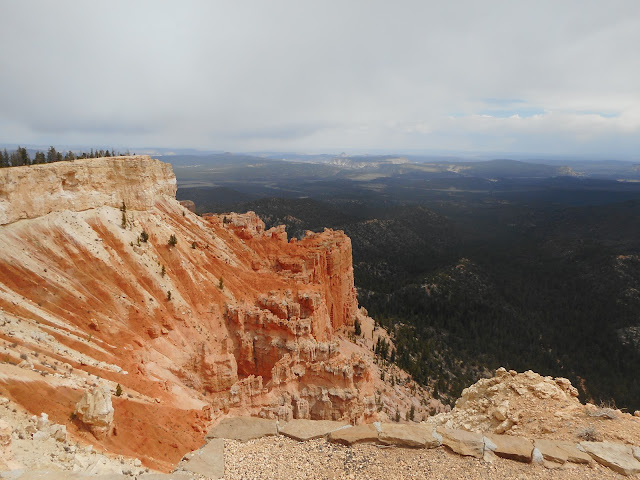Hill Air Force Base, as seen from the Layton foothills.
WHAT IF?
It could have been that Hill Air Force Base (celebrating its 80th
anniversary in 2020) had a different name.
The original Utah proposal was to name the base "Dern Field,"
after Utah's sixth governor, George Henry Dern (who served from 1925-1933).
Dern was later the U.S. Secretary of War under President Franklin
Roosevelt from 1933 until his death, in 1936.
According to the Davis County Clipper of Jan. 24, 1990, it was
U.S. Representative J.W. (James William) Robinson, a Democrat from Utah, who
made the suggestion to name the air base after Dern.
This honor wasn’t just to honor the late Governor/Secretary Dern
for his high political offices. According to the Ogden Standard-Examiner of
Feb. 4, 1940, Dern had “made an inspection” in 1935 of the potential air base
land in northern Utah and “became very sympathetic towards its potential
possibilities.”
“Secretary Dern’s efforts were responsible in a large measure for
renewed interest in this project,” The Standard-Examiner further reported.
This led to the War Department securing options on 4,135 acres of land
in the area where the Ogden Chamber of Commerce was promoting as ideal for a
future air base and ordnance depot site.
Although most Utahns likely agreed it was a good idea to honor
Dern with the base name, it apparently did not square with current Army Air
Force policy.
According to the 1990 Clipper story, Army General H.H. Arnold
responded to Robinson's naming proposal that the base "would probably be
named after an army flier who performed distinguished flying service in Utah,
or whose death occurred in that vicinity."
Notwithstanding, the Hill Top Times newspaper of Jan. 1, 1946
stated, “War Department General Order No. 9 names site OAD ‘Hill Field’ in
honor of Major Ployer P. Hill.”
(“Hill Field” was the base’s original name and it was retitled,
“Hill Air Force Base” on Feb. 5, 1948.)
Major Ployer "Pete" Hill was killed while piloting the
experimental Boeing B-17 ("Model 299") bomber at Wright Field, Ohio
on Oct. 30, 1935.
However, Ployer Hill had no ties to Utah and Wright Field was more
than 1,600 miles from today's Hill Air Force Base.
(Strangely, the crash was caused because the crew forgot to remove the pins from the flaps on the plane before takeoff. This "why?" mystery has led to a lot of speculation, including if the crew had been drinking before takeoff? ... But almost 9 decades later, there's no way to ever solve this mystery.)
The fact that the sandy area where today's Hill Air Force Base is
actually located on a "Hill,” elevated from much of the surrounding area,
has made the title more appropriate over the decades.
Yes, there is no indication of displeasure with the base’s name, or any known move to rename it. In fact, during its early years, Hill Field paid tribute to the daring test pilot on the anniversary of his death. “Field recalls tragic death of Major Hill. Army Base pays tribute to officer who died seven years ago,” was an Oct. 29, 1942, headline in the Standard-Examiner.
In addition, the base’s naming finally had its late arriving Utah
connection in the 1960s. The Standard-Examiner of Nov. 7, 1965 reported that Major
Hill’s only son, also named Ployer P. Hill, served a tour at Hill AFB as a
major, from 1964-1966, prior to a combat mission in Vietnam.
(The younger Major Hill died on Jan. 21, 2008 at the age of 83 in
Florida.)
Yes, “Dern Air Force Base” doesn’t sound right after more than 80
years. It could have been, but the Hill name is both appropriate and deserving
today.
-MORE HISTORY: The famous Wright Brothers flight at Kitty Hawk,
North Carolina in 1903 had a big effect on one Utah resident -- even some eight
years later.
"Ogden aviator comes to grief" was an Oct. 19, 1911
headline in the Salt Lake Telegram newspaper.
"Fired by the accounts of the glider experiments of the
Wright Brothers in North Carolina, Ray Irwin, 14 years old, constructed a
biplane glider with a wingspan of 26 feet ..." the Telegram reported.
The young man, with the help of others, took off from the
sandridge and glided some 300 feet and across the Weber River until it plunged
to the earth and crashed in the sagebrush. Irwin escaped with minor injuries.
The Salt Lake Herald Republican newspaper of Oct. 19, 1911 hailed
Irwin as "Ogden's first aviator." That newspaper said Irwin sprained
his left leg on impact and that crash broke the framework of his glider. He
apparently had some 300 spectators of his short flight.
(-Originally published on September 19, 2020 in the Deseret News.)












































